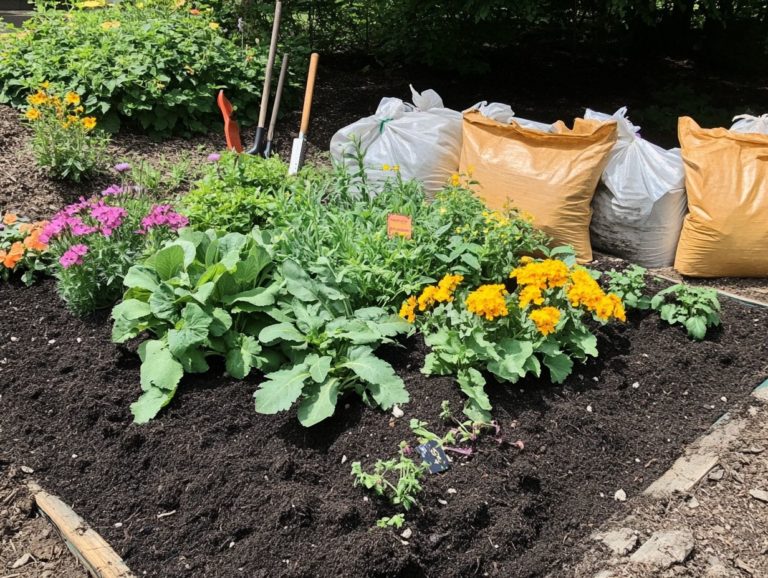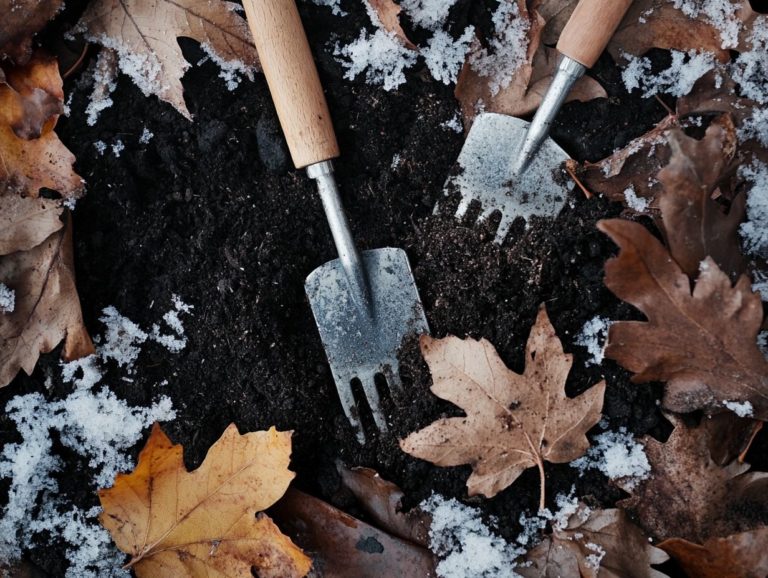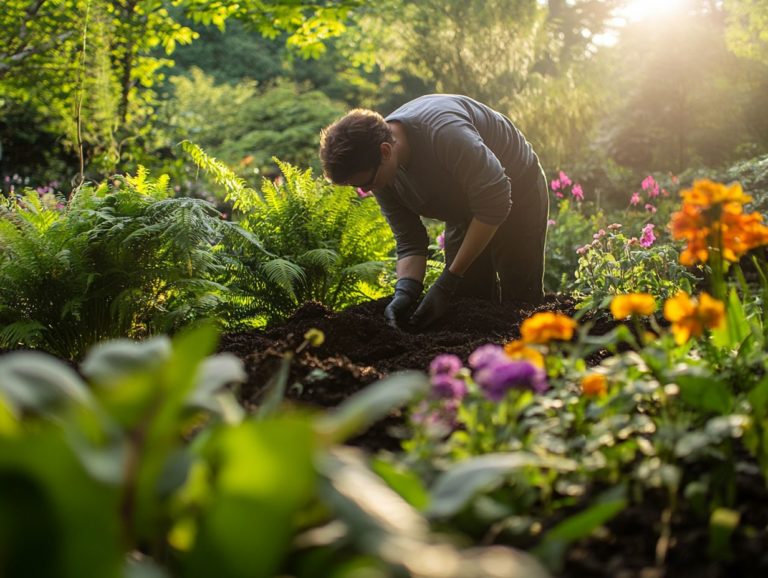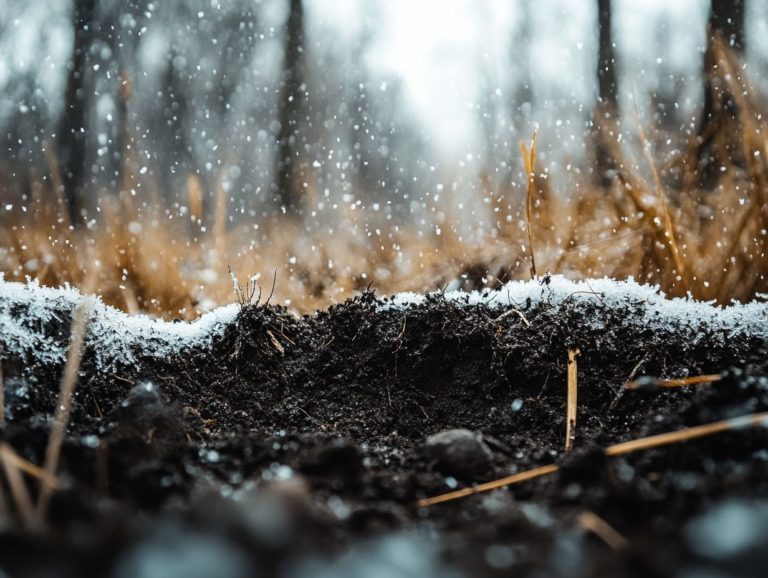5 Essential Tips for Soil Preparation
Preparing your soil is an essential step for any successful gardening or landscaping project. Whether you re starting a brand-new garden bed or revitalizing an existing one, understanding the nuances of soil preparation can significantly impact your plants’ health and productivity. Proper soil care is fundamental to maintaining healthy plants.
Here are five essential tips to help you get your soil primed for planting:
- Testing the soil (soil test)
- Clearing the area
- Enriching it with organic matter
- Leveling the surface
- Additional considerations (like weed removal)
This guide answers common questions about tools, soil types, and gardening tips. Dive in and unveil the secret to nurturing thriving plants!
Contents
Key Takeaways:
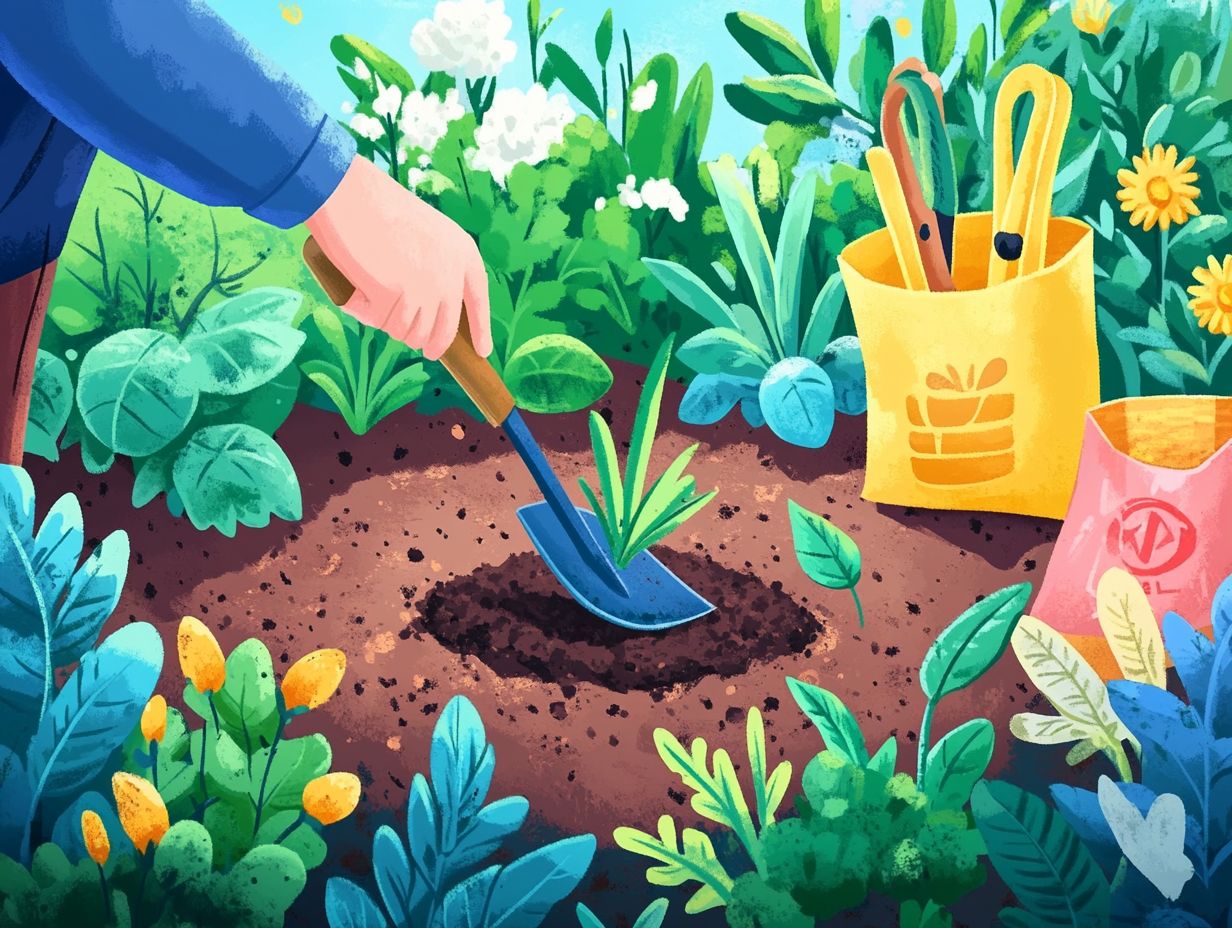
- Test your soil before preparing it to determine its nutrient levels and pH balance.
- Clear the area of any debris and add organic matter to improve soil structure and fertility.
- Use appropriate tools, till the soil, and level it to create a smooth and suitable surface for planting.
1. Test Your Soil
Testing your soil is an essential first step in your gardening journey. It provides you with valuable insights into pH levels, nutrient composition, and overall quality.
This knowledge significantly influences the health of your plants and determines the success of your gardening endeavors. By conducting soil tests, you can accurately identify the necessary amendments to help your plants grow better.
You have various options at your disposal, from DIY kits to professional laboratory services, allowing you to assess crucial factors like organic matter content and moisture retention.
Understanding pH levels is vital since they can greatly impact nutrient availability. If your soil is too acidic or too alkaline, it could hinder plant growth.
Regular testing for nutrient deficiencies will also help you uncover imbalances that might stunt growth or lead to disappointing yields. Ultimately, being well-informed about these elements gives you the power to foster healthy soil, creating a solid foundation for thriving plants and bountiful harvests through practices like organic gardening and layered gardening.
2. Clear the Area and Remove Debris
Clearing the area of weeds and debris (weed removal) is an essential step in preparing your garden. This gives your plants the best chance to thrive without the competition and obstacles posed by their surroundings.
This meticulous process not only eliminates unwanted flora but also minimizes the risk of pests and diseases that could threaten your cherished plants. Employing effective techniques, like using a landscape rake, can greatly simplify this task.
This handy tool allows you to remove large clumps of debris and uproot stubborn weeds with ease, creating a pristine canvas for future planting. By prioritizing this fundamental practice in organic gardening, you lay a strong foundation for healthy plant growth.
3. Add Organic Matter
Incorporating organic matter think compost and leaf mold into your soil is crucial for enhancing its nutrient content and structure. This leads to improved soil health and promotes better plant performance in your garden.
Different types of organic matter include:
- Well-rotted manure
- Green waste
- Worm castings
These materials work to boost soil fertility and encourage beneficial microbial activity. Different composting methods, like hot composting and vermicomposting, can yield a variety of organic materials tailored to your specific gardening needs.
As these materials decompose, they enhance soil aeration, improve moisture retention, and stimulate the growth of beneficial soil organisms. The resulting enrichment not only nourishes plants effectively but also supports sustainable gardening practices, fostering a vibrant ecosystem in your garden beds.
Ready to transform your garden? Start preparing your soil today for amazing results!
4. Till the Soil
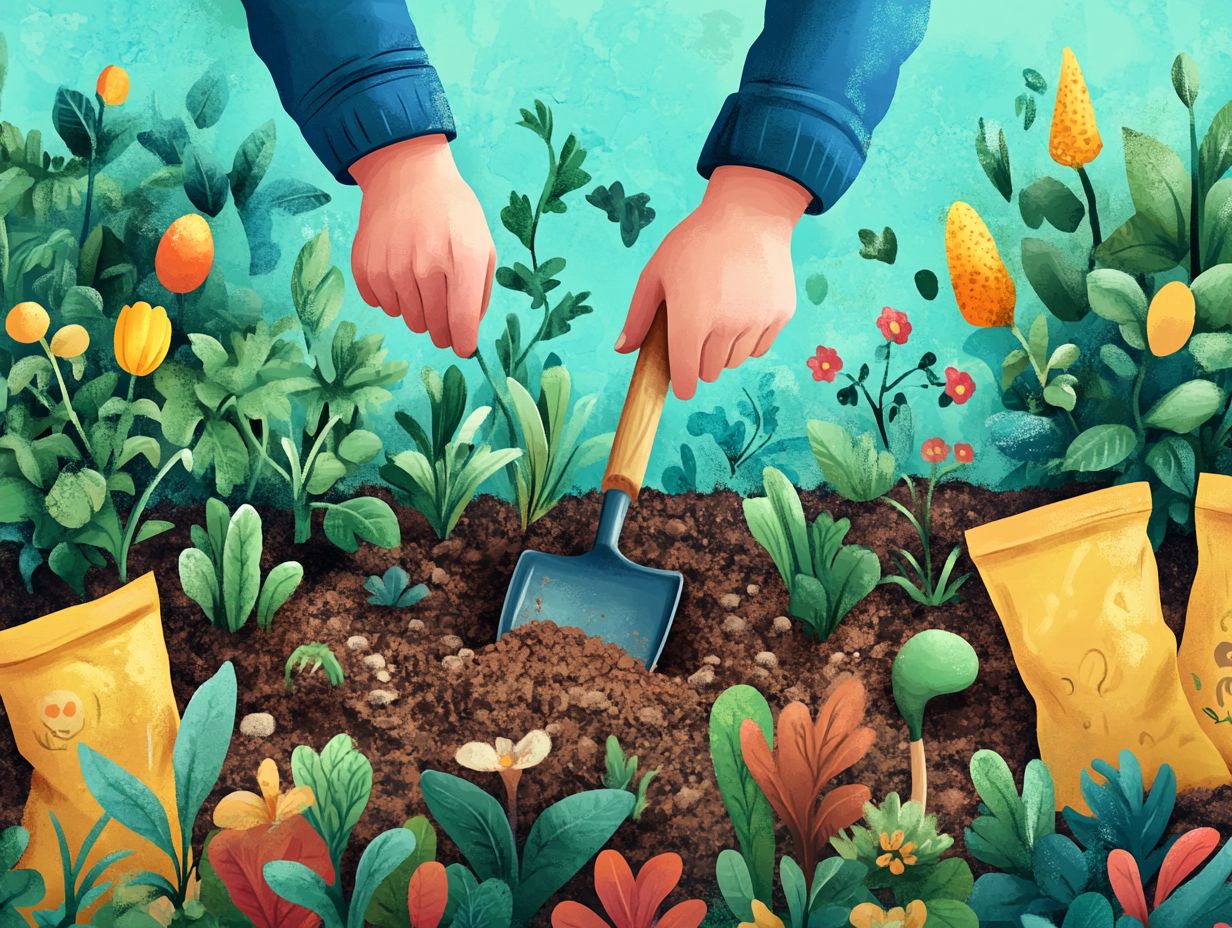
Tilling the soil is an essential process that breaks up compacted layers. It enhances the soil structure and promotes better drainage.
This is crucial for creating an environment where your plants, including vegetables, can truly thrive.
Various tilling methods exist, including conventional, minimum, and no-till. Each method plays a unique role in soil management.
For instance, conventional tilling can effectively break apart heavy soils. However, it might also disrupt existing ecosystems.
On the other hand, no-till practices can help retain moisture and encourage the activity of earthworms. Earthworms are fantastic for nutrient movement.
By turning the soil, you stimulate beneficial organisms like earthworms. This leads to more aerated soil and improved access to nutrients for plant roots.
These practices prepare the soil for planting by enhancing its drainage and aeration. Ultimately, this results in healthier and more productive gardens.
5. Level and Smooth the Soil
Leveling and smoothing the soil is a crucial final step in your soil preparation. This ensures even drainage across your garden bed.
Even drainage is vital for preventing waterlogged soil and promoting robust plant growth.
An even surface not only facilitates proper water runoff. It also enhances accessibility for planting and maintenance.
You can make this task manageable by utilizing tools like a rake, leveling board, or even a simple garden hoe.
Techniques such as dragging a length of 2×4 or using a hand tamper effectively compact the soil. This minimizes air pockets that can disrupt drainage.
By dedicating time and effort to achieving a smooth surface, you re setting up a solid foundation for your plants.
This commitment can dramatically boost your crop yield and transform your garden into a thriving paradise!
What Tools Do You Need for Soil Preparation?
Equipping yourself with the right tools for soil preparation is crucial for achieving optimal results. Consider checking out the top 7 tools for soil preparation, such as a landscape rake, trowels, and compost bins, as your gardening allies.
By integrating these tools into your gardening routine, you can simplify the process of creating a robust soil environment.
A landscape rake, for example, plays a pivotal role in leveling and clearing the ground. This ensures that air and nutrients can penetrate more effectively.
Trowels are your go-to for digging and transferring soil amendments. They make precise plant placement and root development a breeze.
Compost bins allow you to efficiently recycle organic waste into nutrient-rich material. This boosts soil fertility.
Choosing the right tools not only lightens your workload but also supports eco-friendly practices.
This ensures your garden flourishes sustainably for years to come.
How Often Should You Prepare Your Soil?
Regular soil preparation is essential for maintaining the health and fertility of your soil. To enhance your gardening experience, consider the top 5 tips for planting in cold climates, as the frequency is dictated by your gardening methods and the unique needs of your plants throughout the growing seasons.
Consider factors such as crop rotation. This plays a pivotal role in determining how often you should till or amend the soil.
By implementing a rotation system, you can effectively prevent nutrient depletion. This enhances both soil structure and biodiversity.
Don t forget to factor in seasonal changes. Different times of the year may call for varying preparation techniques to optimize growth.
For instance, in the spring, amendments can be crucial for nurturing young plants. Meanwhile, autumn may be the time to focus on enriching the soil after harvest.
Specific plant requirements, like pH levels which measure acidity or alkalinity and nutrient needs also influence how frequently and in what manner you prepare the soil.
This ensures that every garden flourishes to its fullest potential while addressing soil quality.
What Are the Benefits of Proper Soil Preparation?
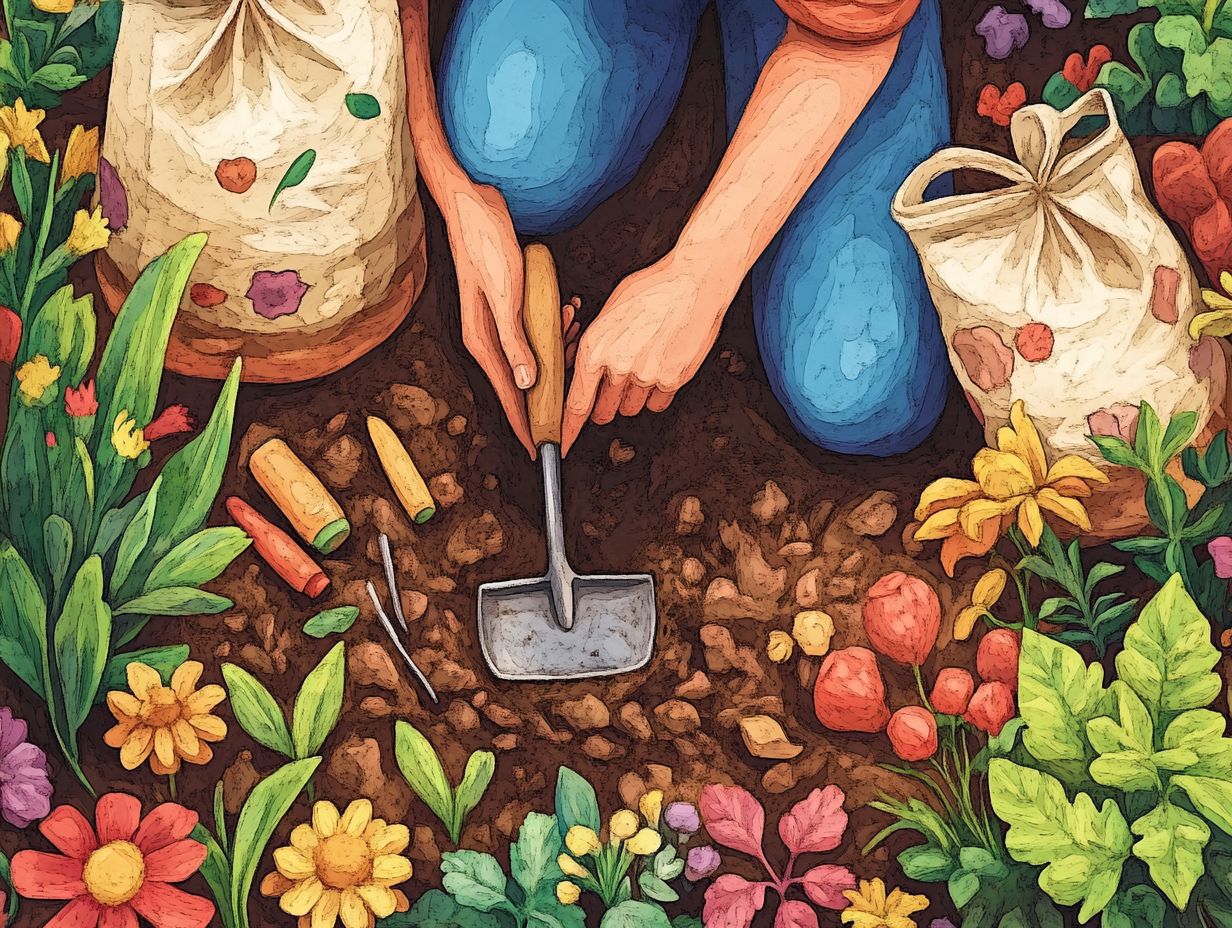
Proper soil preparation has many benefits. It enriches nutrients, improves drainage, and creates a thriving environment for your plants. This careful process keeps harmful nutrients away and protects your plants!
By establishing a well-structured soil profile, you ensure that air and water can penetrate effectively. This is vital for root development.
A healthy soil ecosystem fosters beneficial microbial activity, enhancing nutrient breakdown and availability. When these elements work together in harmony, they significantly boost plant vitality.
In essence, investing time in thorough soil preparation is an investment in your gardening success.
What Are the Different Types of Soil and How Do They Affect Preparation?
Understanding the various types of soil sandy, clay, and loamy is crucial for determining the best soil preparation techniques. This knowledge helps cultivate an ideal growing environment for your plants.
Each soil type has unique characteristics that affect water retention, drainage, and nutrient availability. For instance, sandy soils are known for excellent drainage but often lack essential nutrients. Clay soils retain moisture but can become compacted, hindering root growth. Loamy soils are frequently lauded as the gold standard for gardening, offering a harmonious blend of sand, silt, and clay.
To assess your soil composition, consider performing a straightforward jar test. Simply mix a sample with water and observe the layers that develop.
By making amendments such as incorporating organic matter, compost, or specific fertilizers you can significantly enhance soil structure, fostering healthier plants and more bountiful gardens.
How Can You Tell If Your Soil Is Ready for Planting?
Determining whether your soil is ready for planting requires careful assessment of key factors such as soil pH, texture, and consistency. These elements profoundly influence both growth and yield.
Begin by visually inspecting the soil; it should have a crumbly, dark appearance, signaling good structure and organic matter content. To gauge its texture, take a handful of moist soil and give it a squeeze. If it holds its shape like a ball, you re likely in good shape for planting.
Soil pH measures how acidic or alkaline your soil is, which affects nutrient availability. A soil test kit can swiftly indicate whether any amendments are necessary. By following these steps, you can cultivate an environment where your plants can truly flourish.
What Mistakes Should You Avoid When Preparing Soil?
Avoiding common mistakes during soil preparation is essential for creating a robust foundation for your garden. Many errors arise from inadequate testing, improper amendments, or neglecting drainage, so be sure to follow cold-climate gardening soil preparation tips to ensure success.
These oversights can lead to poor plant health and squandered resources. For instance, failing to conduct soil tests means missing out on vital information about nutrient levels and pH.
To sidestep these pitfalls, start by conducting thorough soil tests. Use amendments wisely based on those results and always prioritize proper drainage. This approach creates an optimal environment for growth and sets you on the path to gardening success.
Frequently Asked Questions
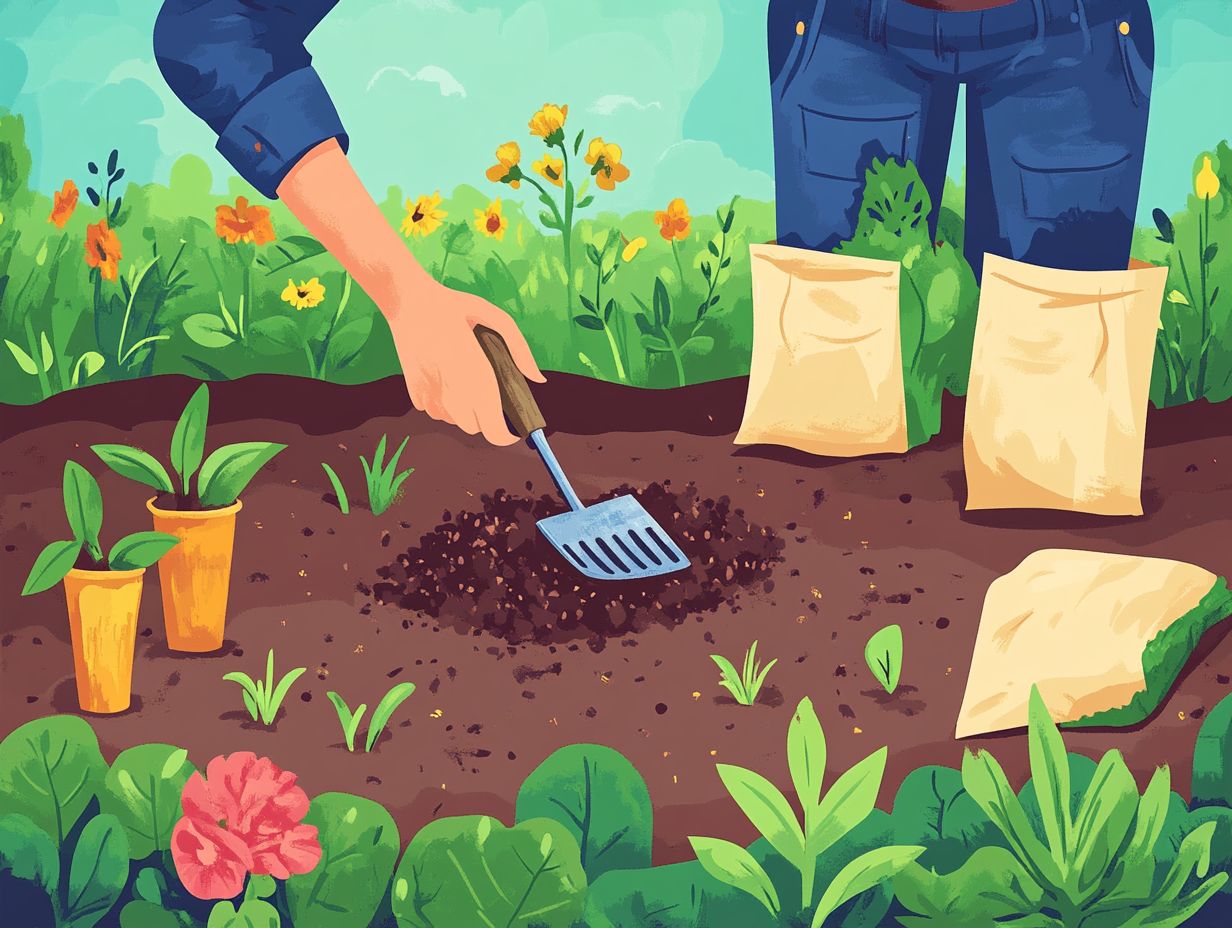
Got questions? Here are some common queries about soil preparation!
What are the 5 essential tips for soil preparation?
The essential tips are testing the soil, removing weeds and debris, adding organic matter, loosening compacted soil, and timing your preparation.
Why is it important to test the soil?
Testing the soil gives you crucial information about its nutrients and acidity. This helps you prepare the soil effectively for healthy plants.
How do I remove weeds and debris?
Remove weeds and debris by hand or with a hoe or rake. Clear them out promptly to stop them from competing with your plants.
What are some examples of organic matter?
Good organic matter includes compost, manure, grass clippings, and shredded leaves. These enhance the soil, adding nutrients and boosting beneficial microbes.
What is the best method for loosening compacted soil?
Use a garden fork or tiller to loosen compacted soil. Avoid tilling when the soil is too wet, as this can make it even denser.
When is the best time to prepare the soil?
The ideal time to prepare soil is early spring, just before planting. This lets amendments break down and mix in. You can also prepare it in the fall if needed.

